Life in Radiology.
We pride ourselves on providing an environment that engenders a healthy work/life balance. We are very welcoming towards new collegues and feel confident that you will quickly become an integral member of the team.
To give you a feel of what it's like to work here we've asked collegues to give us their personal view.
Mandela Thyoka (2015/2016)
Sheffield Radiology Training Scheme is an excellently well-organised scheme which is a dream for any aspiring new trainee. The thought of a new career in radiology can be a daunting prospect however, the experience at Sheffield is very supportive and the induction programme greatly assists new trainees to settle. Unprecedented support from other trainees and consultants, and a training programme that places trainees at the centre of its activities allows new trainees to excel in their first year of training. The training scheme has been designed to support newcomers in maximising their learning experience. The year is split into quarterly attachments based on Ultrasound, CT and Fluoroscopy imaging modules and a stand-alone mixed slot attachment (paediatric radiology mixed with gynaecological ultrasound and interventional radiology). Plain film reporting support by Consultants and senior post-FRCR Registrars greatly helps in the practice of radiology anatomy.
The first six months are dedicated to FRCR1 exam preparation, with Physics and Anatomy tutorials and early in-house assessments to aid targeted revision. During the latter six months, trainees gain experience in handling daytime duty cover, assisting in developing skills that will be vital for the on-call work. I found the whole department friendly and supportive and a very pleasant and extremely enjoyable time of learning radiology.
There are dedicated social events that allow development of strong bonds among trainees and between trainees and trainers. I would highly recommend Sheffield as a place for radiology training where dreams are realised.
Lizzie Rogan (2011/12)
The first year of radiology at Sheffield has been a fascinating and extremely enjoyable experience. Radiology is a specialty that I had not had much experience of in my house jobs and I did feel like I was going back to medical school at first. There is a lot to learn, but having reached the end of my first year I now feel confident in skills such as performing barium swallow and ultrasound scans, reporting X-rays systematically, and I now know what all those ‘grey blobs’ on a CT scan actually mean! There is fantastic support from the consultants and senior registrars and countless excellent teaching sessions.
The year is split up into four 3-month modules: Ultrasound, CT, Fluoroscopy and Mixed slot (paediatrics, gynaecological ultrasound and vascular), and this has enabled me to become confident in these basic modalities of radiology, which are essential preparation for on-call work (which starts in year 2).
The first six months also include anatomy and physics lectures in preparation for the FRCR part 1 in March. Physics was a bit of a wake-up call as I had not done it since GCSE, but my colleagues in more senior years have been extremely helpful in giving me tips, and suggested books to help us pass.
After the exams we have sessions where we hold the ‘duty’ bleep, which has been extremely useful for on-call preparation.
Sheffield is a fantastic training scheme with an extremely friendly and sociable group of registrars. Outside of radiology we have plenty of socials, including the Christmas curry and football and netball games against the consultants. The Radiology ball is organised annually by the 1st year registrars in the second half of the year, and is a fantastic night for the whole radiology department.
Anup Mathew (2010)
As first years, we were forewarned that at times we might feel like being back to medical school days...that felt very true! We spent 3 months each learning the ropes of modality-based training which included CT, ultrasound, fluoroscopy and the 'mixed' slot (paediatric, vascular, gynaec-obs radiology and nuclear medicine). I found the department very friendly with radiographers, sonographers and other support staff keen to help you even at busy times (=all the time).
Thursdays were dedicated to teaching to prepare for the FRCR-1 Physics module, when we developed a new respect for electrons as we followed them on their journey to produce all those images that we take for granted. Tuesday afternoons began with a 'hot-seat' tutorial where wetook turns trying to identify pathology under the scrutiny of the consultant and our peers. This was followed by a session common to all pre-FRCR registrars where module-specific teaching is delivered, geared towards the final FRCR examination.
The opportunity of showcasing your audit/research project at the annual Grainger Prize Meeting held in June is a strong motivating factor to get involved in one...and there is never a lack of ideas.
And just when we were basking in the afterglow of having passed the FRCR Physics module, and beginning to forget every doctor's perpetual foe, 'The Bleep', it landed in our hands as we found ourselves on the duty rota. These sessions exposed us to some very important aspects of radiological training: decision-making, prioritisation and communication. It was indeed a steep learning curve, but excellentsupport from seniors and consultants meant that we did not feel out of our depth (most of the time!) And before you realise it, you are into second year..."
Dev Betarse (2009)
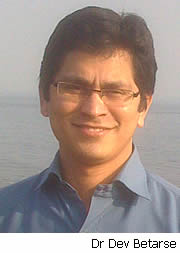
My experience as a first year trainee has been an exciting roller coaster ride. Gradual introduction into the training scheme started with weekly physics and anatomy teaching and 3 monthly generic attachments. The physics and anatomy lectures are well organised and structured to cater for the FRCR part 1 exam. In addition, dedicated weekly teaching on Tuesdays comprised of general radiology tutorials and teaching for FRCR exams. In addition there are various in house courses, which include ALS, Emergency radiology study days, etc. There are ample opportunities to involve in audit and research projects.
Placements in Ultrasound, CT/MRI, Fluoroscopy and mixed slot (comprising of paediatrics, Gyn/Obs ultrasound, vascular intervention and nuclear medicine) gave a good insight into different imaging modalities and interventional procedures.
Post FRCR part 1 exam in March the pace picks up with greater involvement in supervised reporting; carrying the duty bleep during the day has been a good confidence building exercise for the 2 tier on calls starting in the second year. The support from the consultants, senior colleagues and other staff has been excellent.
The varied placements, excellent teaching and most importantly a relaxed atmosphere have given a great start for a challenging and exciting journey into the next 4 years.
Andy Martin (2015/2016)
With FRCR Part 1 and a basic understanding of CT, ultrasound and plain film reporting you step boldly in to year 2. Lots of things change in the second year and on the whole they are for the better! More responsibility, more opportunity to get hands on doing intervention and more “on the job” teaching
During the second year you will rotate through four 3 month rotations; largely covering the core modules MSK, Neuroradiology, Paediatrics and Chest radiology. Each of these modules brings its own unique challenges and learning experiences. From reporting A&E trauma films in MSK and acute MRI and CT head in neuroradiology to running ultrasound lists in the paediatric rotation and chest drain insertions in the Chest rotation. There is lots to do and learn and the extra responsibility is welcome after feeling a bit like a “fish out of water” in the first year, and throughout you have consultant lead supervision.
There are more duty shifts which you’re now becoming more familiar with and this is the year you also start on the on call rota. You do weekday evenings, weekends and a couple of sets of night shifts throughout the year and all of them are under the expert supervision of one of the ST3+ registrars. These on calls are a great learning experience, you get to see and do interventions, do lots of ultrasound and report lots of acute CT and MRI. It’s annoying to lose your evenings and weekends but it is a great part of the Sheffield training scheme that we have this 2 tier on call system as it really prepares you for having to do the solo on calls in year 3.
With the change in the exam system this year is the perfect year to get involved with audits and projections to try and beef up your CV and there are always lots of people keen to get you involved.
Moving up to the second year can feel like a big step but it beats weekly physics lectures!
Mark Cooper (2011-12)
The second year as a radiology trainee in Sheffield is excellent. The stress of FRCR part 1 is behind you (hopefully!) and you are beginning to feel comfortable holding the duty bleep. However, the second year brings new challenges; joining the on-call rota and FRCR 2A modules to name just two.
During the second year you will rotate through four three-month attachments, thoracic & cardiac, neuro-radiology, musculoskeletal and paediatrics. During each of these you will be treated as, and feel, part of the team. You will be encouraged to report much more than in the first year but will always be closely supervised. For example, during the thoracic slot you will be responsible for reporting all of the CTPAs performed out of hours and the CXRs from the cardio-thoracic wards. It can feel like quite a leap from the first year but it’s what you came in to radiology for and you will enjoy it!
After a year with no on-call a return to a two-tier on call rota is a bit of a shock to the system but the banding increase is very welcome! This really is one of the highlights of the year and a brilliant learning opportunity. All of your on-calls will be with a senior registrar colleague with consultant cover if needed. Towards the end of this ‘buddy system’ year trainees feel ready for the challenges of single-tier on-call.
As you might expect, during the first year of radiology training you spend a lot of time feeling like a fish out of water. The second year is busy but a great learning experience and, on the whole, good fun. As for the third year; ask me next year!
Philip Borg (2010)
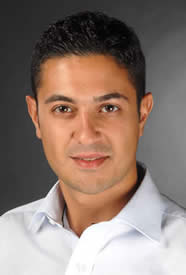 Radiology training in Sheffield in 2nd year is an exciting period where you can expose yourself to as many different cases as possible in a supervised environment. We are encouraged to learn and report as much as possible and ask for advice whenever needed.
Radiology training in Sheffield in 2nd year is an exciting period where you can expose yourself to as many different cases as possible in a supervised environment. We are encouraged to learn and report as much as possible and ask for advice whenever needed.
The four modalities in 2nd year are all very well organised and the consultants very eager to teach and share their clinical experience. This experience is an essential companion to studying necessary to successfully pass the FRCR 2A exams.
As a second year you will be expected to take on more responsibility and prepare yourself for a single tier on call towards the end of the year. Throughout the year you will be on a 2 tier on call with a more experienced registrar. Various audit, research, teaching and publication opportunities are available in different subspecialties.
Naomi Hersey (2009)
The 1st year of radiology training is always going to be a bit unnerving as you enter a totally new specialty. By the 2nd year all the basics from that 1st year come together and you begin to feel like a radiologist. In Sheffield the 2nd and 3rd year are split into 3 month attachments based around the FRCR 2A module exams. All trainees get the same experience, providing excellent general training on which to build. The 2nd year includes modules in thoracic and cardiac, musculoskeletal, neuroradiology and paediatrics. There is a high level of supervision in all the attachments and the learning curve is both steep and exciting.
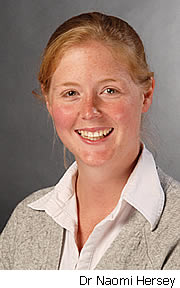 The Sheffield Children’s Hospital offers excellent experience in a tertiary centre. The Royal Hallamshire Hospital is renowned for its research in the field of neuroradiology and there are ample opportunities for trainees to get involved in this if you so wish.
The Sheffield Children’s Hospital offers excellent experience in a tertiary centre. The Royal Hallamshire Hospital is renowned for its research in the field of neuroradiology and there are ample opportunities for trainees to get involved in this if you so wish.
After a year of no on call commitments, the 2nd years return to a 2 tier on call system. This is a great learning opportunity as all on calls are undertaken with a senior registrar colleague. After a year of this buddy system trainees feel well equipped to begin single tier on call in year 3.
Audit and research are encouraged throughout all years. The Grainger Prize is an annual prize awarded to a junior and senior registrar for work carried out in these fields. In addition, many registrars present work both nationally and internationally which is not only excellent experience but a great opportunity to improve you CV for the future.
Sheetij Kumar Shekhar (2015/2016)
The third year is the final year of core training, with trainees undergoing four 3 month placements in Gastrointestinal, Urology & Gynaecology (6 weeks each), Breast & Nuclear (6 weeks each) and Vascular radiology. Over the year, trainees become more independent with their reporting and performing certain procedures. By the end of the year, trainees will be expected to have an idea of what they would like to sub-specialise in.
3rd year is when Sheffield trainees start doing independent on calls. This is a daunting step up, however, having had a years’ experience of acute CT as a 2nd on call during the 2nd year, with a more senior registrar for guidance, this feels more like a natural progression. There will be a 2nd year trainee on call with you to whom you are now expected to supervise and provide guidance.
We get increased exposure to practical procedures, throughout the year, with consultant supervision readily available and more experience with MRI in each placement.
By the end of third year, you are expected to have passed the FRCR 2A and start preparing for the FRCR 2B exam. Consultants donate their time generously in order to help prepare the 2B candidates thoroughly and give them the best chance of succeeding. This is no doubt a major contributor in the excellent 2B results achieved by previous trainees within the scheme.
There is good camaraderie within the registrar body in this training scheme, we often meet up for social events and sporting activities (including a twice weekly game of football).
Zahia Zaitout (2011 - 12)
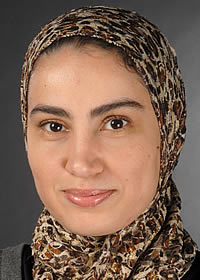
The third year of core radiology training was the most exciting. Trainees find that they can apply the knowledge and skills they have acquired throughout the first and second years. The third year consists of 3 month rotation blocks which include vascular radiology, gastrointestinal imaging, genitourinary radiology as well as breast imaging and nuclear medicine combined.
There were many opportunities for more independent interventional skills and reporting. In addition, there is also more exposure to MRI reporting, particularly during the gynaecological and gastrointestinal imaging rotation and several opportunities to pursue research. Trainees are encouraged to make use of their study leave and supported to attend national as well as international meetings and conferences. For this we have two helpful dedicated administrators that deal with the enquiries and study leave applications.
The consultants in Sheffield Teaching Hospitals are immensely helpful and approachable in the preparation for the FRCR 2B exam. The quality of the teaching was outstanding. I found the department of radiology in Sheffield extremely friendly and enthusiastic.
Anand Kirwadi (2010)
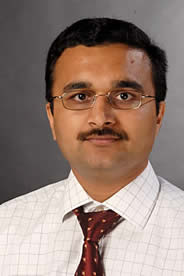 In the final year of core training (year 3) we undergo training in Gastrointestinal, Vascular and Cardiac, Breast, Gynaecology, Urology and Nuclear medicine modules based in Sheffield Teaching Hospitals NHS Trust. You start to report more on your own and to perform various image guided procedures under Consultant supervision. You are expected to pass all the FRCR 2A module examinations by the end of year 3 and take the Part 2B examinations soon after. The Tuesday afternoon dedicated teaching program continues through out the year. However, in the second half of the year there will be more intensive and focused practice in all 2B exam components for the registrars taking these exams. Sheffield training scheme takes pride in boasting a very high pass rate at the 2B exams (100% in autumn 2011term) and the credit for which must go to the consultants based in Sheffield who are extremely enthusiastic in providing excellent teaching tailored towards the exams.
In the final year of core training (year 3) we undergo training in Gastrointestinal, Vascular and Cardiac, Breast, Gynaecology, Urology and Nuclear medicine modules based in Sheffield Teaching Hospitals NHS Trust. You start to report more on your own and to perform various image guided procedures under Consultant supervision. You are expected to pass all the FRCR 2A module examinations by the end of year 3 and take the Part 2B examinations soon after. The Tuesday afternoon dedicated teaching program continues through out the year. However, in the second half of the year there will be more intensive and focused practice in all 2B exam components for the registrars taking these exams. Sheffield training scheme takes pride in boasting a very high pass rate at the 2B exams (100% in autumn 2011term) and the credit for which must go to the consultants based in Sheffield who are extremely enthusiastic in providing excellent teaching tailored towards the exams.
On-call:
From the beginning of year 3, you start doing independent on-calls, supported by the Consultants who are off-site when necessary. Due to the increasing workload out-of-hours, usually there is a 2nd year registrar with you during the weekdays and weekend days to help with reporting.
Teaching
Actively involved in teaching medical students and prospective radiology applicants who wish to spend a ‘taster week’ in radiology. Along with a consultant you will be expected to take part in formalised teaching for foundation year doctors.
Future career/Fellowship
By the end of year 3, you have the opportunity to decide on the sub specialty of your choice to undergo higher training during years 4 & 5. If you wish you can sub-specialise in more than one specialty or train as general radiologist in view of working in a district general hospital as a consultant radiologist. You will be going to the nearby district general hospitals for 6 out of 12 months of year 3, where you will be encouraged to tailor your work commitments based on the subspecialty of your choice.
Aki Kamil (2009)
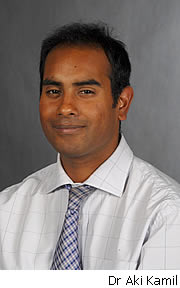 The 3rd year builds on the experiences of the previous two years and you become more autonomous in terms of reporting independently and performing interventional procedures. The start of 3rd year also sees the start of solo on calls, a daunting prospect for many, but by then the experience of doing supervised on calls in the 2nd year really pays off and most people enjoy being on call on their own.
The 3rd year builds on the experiences of the previous two years and you become more autonomous in terms of reporting independently and performing interventional procedures. The start of 3rd year also sees the start of solo on calls, a daunting prospect for many, but by then the experience of doing supervised on calls in the 2nd year really pays off and most people enjoy being on call on their own.
We also assume increased responsibility for teaching undergraduates rota’d into radiology for short periods and junior radiology StRs. We become involved in enthusing prospective applicants for radiology at careers events and during the annual recruitment process; obviously successfully as the Sheffield Programme was fully subscribed immediately offers were made!
The Sheffield Consultants are extremely helpful in providing tutorials for the looming FRCR 2B exams and it is thanks to them that Sheffield maintains an excellent success rate in this regard.
Overall I’ve found the department is friendly, well organised and active socially - group nights out are arranged frequently and are well attended
Life as a 4th year registrar
Santhi Chellamuthu (2011-2012)
Having passed the final exam FRCR 2B, the year 4 registrar’s life starts with the excitement of FRCR graduation ceremony.
The choice of subspecialty training starts in year 4 and most of the year 4 registrars are posted to District General Hospitals for 2 of the 4 three month slots. The rotations are based at Barnsley DGH, Chesterfield Royal Hospital, Doncaster Royal Infirmary and Rotherham DGH. This is chosen carefully depending on the sub specialty interest in order to get more experience, and you also get to see how the Radiology department works in a DGH setting. The other 2 attachments are based at Weston Park Hospital (Oncology) and Northern General Hospital.
We are strongly encouraged to take part in activities which strengthen our CV for consultant posts, like conducting audit projects, participating in research and concentrating on publications and presentations, especially at national/ international meetings. We start teaching the junior (year 1 – 3) registrars in Tuesday tutorials and continue to teach F1 and F2s and medical students. We also get to organise the weekly rota once or twice in year 4.
There is ample opportunity to think about and organise fellowships in your subspecialty either within or outside the UK. A lot of Sheffield trainees have successfully secured and undergone well renowned international fellowships in USA, Canada and Australia.
Overall, year 4 builds your confidence in reporting, interventional skills and MDT presentation. The transition from a supervised trainee to independent reporting is very gradual with excellent support from the consultants who are very friendly and approachable.
Life as a Less Than Full Time Trainee
Alice Briscoe (2016)
Radiology is a good specialty choice for those wishing to pursue a LTFT (less than full time) career due to its sessional based approach. There are currently 11 LTFT trainees on the Sheffield scheme, for various reasons. We work between 60- 80% full time equivalent and participate in the on-call rota on a pro rata basis.
We as LTFT trainees rotate through the same rotations as our equivalent full time colleagues and are given the opportunity to repeat specialty slots according to our teaching needs or interests. There is opportunity to be involved in teaching and audit and we are encouraged to participate in that.
LTFT training brings with it many benefits but also at times significant challenges. The Sheffield training scheme values each trainee and there are a number of Consultants who have experienced and continue to experience these challenges. They are good role models and are able to provide advice and support throughout your training and long-term career planning.
Louise Haine (2011)
The Sheffield training scheme has a good track record in catering for trainees who need to work on a less than full time basis, providing that funding is available. You must be able to demonstrate a valid reason for doing this. There are currently five less than full time trainees on the Sheffield scheme. We work at 60% full time equivalent and participate in the on-call rota on a pro-rata basis.
We rotate through the same rotations as our full time colleagues and are given the opportunity to repeat specialty slots according to our training needs or specialty interest. There is ample opportunity to be involved in teaching, audit and research we are supported and encouraged to participate fully in this.
Radiology is particularly adaptable to a part-time career as our work is sessional. There are several part-time consultants working within the region who are available for support and advice about part-time training and future career plans.
Ashleigh Genever (2010)
The Sheffield Radiology programme currently has 4 less than full-time trainees and has had up to 6 at one time. Consequently the training scheme is well versed with providing both general and sub-specialist posts to less than full time trainees and ensuring that training and experience is not compromised. We currently work 60% of full time including on calls and there is often the option to repeat modules during our training to ensure that we get adequate exposure to all sub-specialties.
As we get towards the end of our training we benefit from the fact that there are a significant number of less than full time consultants who can offer support and advice about training and subsequent job plans.
Michael Paddock (ACF)
The NIHR Academic Clinical Fellowship (ACF) provides clinical and academic training to allow trainees to prepare a competitive application towards a doctoral research training fellowship to fund a higher degree or, if applicable, a postdoctoral fellowship (e.g. NIHR, Wellcome Trust, Medical Research Council). The NIHR ACF post lasts for 3 years and trainees are usually spend 25% of their time undertaking research training with the remainder of their time spent undertaking specialist clinical training.
I spent my allocated research time leading a prospective clinical research study assessing fetal brain growth and development using in utero MR, with Professor Paul D Griffiths. I successfully applied for grants as principal investigator and supervised an intercalating BMedSci medical student. The study has now successfully concluded and has been presented at national conferences (BSNR and RCR annual scientific meetings) in addition to being submitted for first-author publication.
I have also spent time pursuing research in the imaging of suspected physical child abuse, with Dr Amaka C Offiah within the Academic Unit of Child Health. I presented our research study at the 2016 International Paediatric Radiology Congress in Chicago, USA, where I was awarded the Young Researcher Award for best scientific oral presentation. I have also had posters at other international conferences in addition to first-author publications in paediatric radiology.
The scheme is also well supported by the Sheffield Vascular Institute for those with an endovascular/interventional research interest. Trainees are encouraged to complete modules from the MSc Clinical Research, funded by the NIHR, to further enhance their skills and portfolio.
Sheffield is a supportive environment in which to receive both clinical and academic training, with countless research opportunities. If anyone would like any further information about the ACF programme in Sheffield, please feel free to get in touch: m.paddock@sheffield.ac.uk
Dr S Goode (2008)
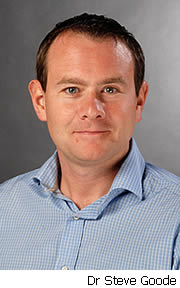 The NIHR Academic Clinical Fellowship (ACF) is targeted at doctors in the early years of specialty training (ST1 onwards). An NIHR ACF provides a clinical and academic training environment to help the trainee in post prepare a competitive application for a training fellowship for a higher degree (e.g. from NIHR, Wellcome Trust, Medical Research Council) or, if applicable a postdoctoral fellowship. NIHR ACF posts last for 3 years unless the trainee is successful in obtaining a Fellowship award and leaves the programme early. On completion of a training fellowship, doctors will return to their clinical programme and at an appropriate point can apply to continue their academic development by applying for clinical lecturer posts.
The NIHR Academic Clinical Fellowship (ACF) is targeted at doctors in the early years of specialty training (ST1 onwards). An NIHR ACF provides a clinical and academic training environment to help the trainee in post prepare a competitive application for a training fellowship for a higher degree (e.g. from NIHR, Wellcome Trust, Medical Research Council) or, if applicable a postdoctoral fellowship. NIHR ACF posts last for 3 years unless the trainee is successful in obtaining a Fellowship award and leaves the programme early. On completion of a training fellowship, doctors will return to their clinical programme and at an appropriate point can apply to continue their academic development by applying for clinical lecturer posts.
I spend 25% of my clinical time performing research activities – early in my 1st year I chose my ACF research projects and gained ethical and R&D approval for these. My 2 main research projects are based in the Sheffield Vascular Institute with Professor Gaines and Dr T Cleveland being my main supervisors for these projects entitled:
- Assessment of Reverse Flow as a means of Cerebral Protection during Carotid Artery Stenting
- Analysis of the UK National Carotid Stenting Registry
Over the course of the rest of my 1st year I completed these studies including patient recruitement and MRI scanning and during my 2nd year I have collated and analysed the data from these. The projects have led to a number of presentations both oral and poster, and these projects both won prizes at the 2009 British Society of Radiology conference in Brighton. I am now in my 3rd year and I hope to write these projects up for publication in peer reviewed journals. If anyone would like any further information on the ACF programme here in Sheffield please email me:s.goode@sheffield.ac.uk.
Life as Neuroradiology Fellow
Dr Ian Craven (2010 - 2012)
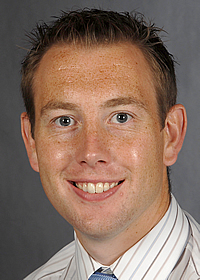 The dedicated Neuroradiology Fellowship in Sheffield is a nationally advertised two year post sub-specialising in all aspects of neuroradiology. The on call commitment is 1 in 6 and it is well supported by your consultant colleagues.
The dedicated Neuroradiology Fellowship in Sheffield is a nationally advertised two year post sub-specialising in all aspects of neuroradiology. The on call commitment is 1 in 6 and it is well supported by your consultant colleagues.
The emphasis of the first year is on the fundamentals of neuroradiology and the week is divided between sessions reporting cross-sectional CT and MR, attending multi-disciplinary meetings, performing diagnostic neurovascular angiography and assisting in interventional procedures. In the second year there is more autonomy with independent reporting and supervising the junior StRs coming through the specialty. There is an opportunity to spend time sub-specialising in head and neck radiology or paediatric neuroradiology at the Sheffield Children’s Hospital.
Research is encouraged and with excellent support from the internationally renowned Academic Unit of Radiology we usually achieve several peer-reviewed publications during the Fellowship alongside oral presentations at both national and international level.
As the Fellow I supervise the final year medical students who rotate through radiology and this gives dedicated time to develop our teaching methods. I have managed to expand this to lecture other groups of medical professionals including the neuro-intensivists and the neurologists.
As part of the fellowship, we are encouraged to complete the European Certificate of Neuroradiology which involves 4 weeks in Europe participating in lectures and exams.
Overall the Fellowship is extremely busy but very enjoyable and the experience is fantastic. The feedback from previous fellows is that it really does prepare you for life as a consultant.
Dr Dan Warren (2009 - 2011)
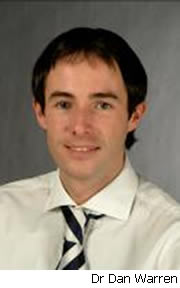 The Neuroradiology Fellowship is a two year post sub-specialising in all aspects of neuroradiology.
The Neuroradiology Fellowship is a two year post sub-specialising in all aspects of neuroradiology.
The first year is designed to emphasise on the fundamentals of neuroradiology and the week is divided between sessions reporting cross-sectional CT and MR, attending multi-disciplinary meetings, performing diagnostic neurovascular angiography and assisting in interventional procedures.
In the second year there is more autonomy with independent reporting and supervising the junior StRs coming through the specialty. There is ample opportunity to spend time at the Sheffield Children’s Hospital focussing on paediatric neuroradiology.
We are encouraged to take part in research and with excellent support behind us we usually achieve several peer-reviewed publications during the Fellowship.
As the Fellow I look after the medical students who rotate through radiology and this gives some dedicated time to develop our teaching methods. I have managed to expand this to lecture other groups of medical professionals including the neuro-intensivists and the neurologists.
As part of the fellowship, we are encouraged to complete the ECNR - The Pierre Lasjaunias European Course in Diagnostic and Interventional Neuroradiology which involves 4 weeks in Europe participating in lectures and exams.
Overall the Fellowship is very busy but the experience is fantastic and really prepares you for life as a consultant.
Life as an Endovascular Fellow
I have spent the last year as an endovascular fellow at the Sheffield Vascular Institute consolidating and advancing skills learnt during my basic 5 year clinical radiology training in Hull. The populations are quite similar, with poor lifestyle, a high smoking incidence and, in addition, a large Asian population with high prevalence of diabetes, creating a large cohort of vascular patients locally, supplemented by national and international referrals.
The team of 5 Consultant Vascular Radiologists work closely with 8 vascular surgeons across 2 sites (Northern General and the Royal Hallamshire Hospitals) and liaise with various other specialties, including neurology, diabetology, renal medicine, cardiothoracic surgery, cardiology, urology and Obstetrics& Gynaecology. The working week consisted of up to 10 elective angiography sessions, with additional emergency lists three times a week. The majority of elective patients were day cases, accommodated in a high throughput 4-bedded day ward. Radiology 'beds' on the vascular wards and weekly combined ward rounds, patient care did not stop once groin haemostasis was achieved, and I was encouraged to regularly review patients on the ward.
Patient care actually started in the weekly outpatient clinics – a novelty in radiology circles! It was fantastic, being in a dedicated vascular radiology clinic, being able to assess patients myself, stratify their management and investigations, monitor various aspects of disease modification, consent and list them, and during follow-up. The satisfaction of seeing patients I had treated myself, describe how it felt 'like having a new set of legs', or the heart-sink of the occasional treatment failure.The rest of the week was mostly spent in the angio suites, where I was given free rein, doing as much as I wanted. While I had done straightforward angioplasties and stents before, I now started dealing with more complex cases – long SFA recanalisations, iliac occlusions, crural interventions, upper limb interventions, consequently my skills repertoire expanded rapidly. Add to this specialist interest skills such as the treatment of the failing dialysis fistula, uterine fibroid embolisation, pelvic congestion treatment and managing various vascular malformations, supplemented by CT and MR experience, and I was learning new procedures almost every week.
My logbook numbers were exploding! Sheffield has been at the forefront of EVAR for a while and I too was soon actively involved in aortic stent grafting, mostly below but a few above the diaphragm as well (not forgetting the spinal drain!). I even learnt to do part of the procedures percutaneously and look forward to the day when EVARs are done entirely without surgical cutdowns. Of course I also had to learn how to plan the EVARs, order the grafts and provide the “before and after” service – embolise internal iliacs and treat endoleaks. Sheffield probably leads the country in carotid stenting and this meant discovering a new world of monorail technique, protection devices and reverse-flow systems (wear wellies when using them!). Cases were discussed at weekly carotid MDTs, and patients recruited for the ICSS trial. The weekly vascular MDT was always a lively forum and with everyone presenting their own cases, I had to be ready for both the usual brickbats and the rare plaudits.
The other aspect of working in Sheffield was getting to know the technology. Various company reps were forever traipsing through the door and offering groundbreaking technology and equipment allegedly before most of the world had heard about it, and whether it be new generation stent grafts, new stents and balloons, detachable coils, occlusion plugs – it felt at times like I used them all. Apart from me there were other trainees at various stages – ranging from course attendees, visiting consultants brushing up their skills, other senior fellows some fellows doing short term attachments, trainees from the Sheffield rotation coming to grips with their first angio to medical students stuttering over aorticanatomy – and I was encouraged to get involved in their training as well. I did a 1 in 6 on call with one of the consultants covering, and that week could be a very mixed bag, from a minor phone consult with a neighbouring hospital to adrenaline surging middle-of-the-night embolisations – including the occasional stabbing or shotgun blast. While I had developed basic wire skills before coming to Sheffield, the past year has equipped me to deal with vascular patients as a whole. Not only have I picked up advanced technical skills, but I now feel confident making clinical decisions, and can deal with a greater range of vascular problems. It has been an invaluable learning experience, and a thoroughly enjoyable one and I thank Professor Gaines and Dr Cleveland for giving me the opportunity. I've worked with a great bunch of colleagues and made new friends – and it has been an experience that I can wholeheartedly and without reserve, recommend to anyone wanting to expand their endovascular experience.
Ramita Dey
Endovascular Fellow
Sheffield Teaching Hospitals
Chris Johns (2015 onwards)
I am radiology SpR in Sheffield currently undertaking a 3 year PhD in Sheffield as an OOPR. My interest is in a comparison between structural lung imaging with CT and functional imaging of the lungs with magnetic resonance imaging.
Sheffield is uniquely placed as a centre for research in chest radiology and radiology as a whole: it is one of only a few centres in the country with an academic unit of radiology, providing an excellent support structure. The University of Sheffield is at the leading edge of pulmonary imaging with Polaris, a team of scientists and clinicians who are working on novel lung MRI methodology particularly using hyperpolarised gases, led by Prof Wild. On top of this there are strong links with other clinical teams, for example, the Sheffield Pulmonary Vascular Disease Unit, one of the few tertiary referral centres for pulmonary hypertension in the UK.
Working closely with the University of Sheffield also offers multiple experiences with medical teaching at both an undergraduate and post-graduate level with opportunities to lecture, set exam questions, sit on interview panels and the option for teaching accreditation with the higher education authority.
Out of programme research in the Sheffield provides the perfect environment for involvement in research, whilst simultaneously gaining clinical knowledge and teaching experience.
Smitha Rajaram (2010-13) and Andy Swift (2010-12)
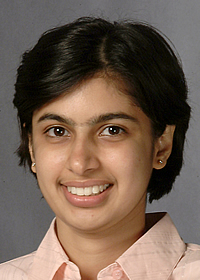 We have undertaken out of programme research (OOPR) with the Academic Unit of Radiology in Sheffield for the past 2 years. This unit is one of only a small number of academic radiology departments in the country. This provides a unique opportunity to undertake high quality research in Radiology and study for a higher degree. There is fantastic support from supervisors Jim Wild (Professor of MR physics) and Dr David Kiely (Specialist PH physician) and mentorship from Professor Griffiths (head of the academic unit). There is a strong collaboration with other member of the cardiovascular research team. We had enjoyed the out of programme research experience in Sheffield and recommend this programme for anyone interested in undertaking research in this speciality.
We have undertaken out of programme research (OOPR) with the Academic Unit of Radiology in Sheffield for the past 2 years. This unit is one of only a small number of academic radiology departments in the country. This provides a unique opportunity to undertake high quality research in Radiology and study for a higher degree. There is fantastic support from supervisors Jim Wild (Professor of MR physics) and Dr David Kiely (Specialist PH physician) and mentorship from Professor Griffiths (head of the academic unit). There is a strong collaboration with other member of the cardiovascular research team. We had enjoyed the out of programme research experience in Sheffield and recommend this programme for anyone interested in undertaking research in this speciality.
Out of programme research with academic unit of radiology in Sheffield is a unique opportunity to study MRI in cardiothoracic disorders particularly in patients with pulmonary hypertension.
As a medium sized programme, registrars in Sheffield often form a close knit group and get to know each other well. It’s small enough so you can get to know the Consultants and the other trainees, but also big enough to find someone to chat to or share a coffee with over lunch. It also has a few regular activities, where trainees can meet up outside work.
Sports:
The department has a regular football game every Tuesday at the University Sports Centre all year round. Anyone can attend, and players come from all areas within and outside the imaging department to have a weekly run around. Additionally, there is the pivotal Christmas football match followed by a traditional Christmas pie, as well as the Annual Consultant Vs Registrar Match held every summer, for yearly bragging rights.
Meals Out:
The department regularly has meals out together; often to celebrate the end of exams or for leaving members of staff, but any excuse is a good reason. Often these are attended by members of the staff from all parts of the imaging department.
Sports
 Every year in June we hold the prestigious Registrar vs Consultant sports day. The evening is completed in a local restaurant with awards given to the best players. In addition to this there are regularly football evenings held at the nearby University Sports Centre.
Every year in June we hold the prestigious Registrar vs Consultant sports day. The evening is completed in a local restaurant with awards given to the best players. In addition to this there are regularly football evenings held at the nearby University Sports Centre.
Annual Radiology Ball
 Last year the ball was held at a popular hotel in Sheffield, events included a 3-course meal, raffle and disco till late. Various members of the radiology department including consultants, registrars, radiographers and other staff attended the event.
Last year the ball was held at a popular hotel in Sheffield, events included a 3-course meal, raffle and disco till late. Various members of the radiology department including consultants, registrars, radiographers and other staff attended the event.
Money collected from the raffle was donated to Sheffield children’s hospital charity. It is an excellent opportunity to socialize and get to know most of the radiology staff informally.